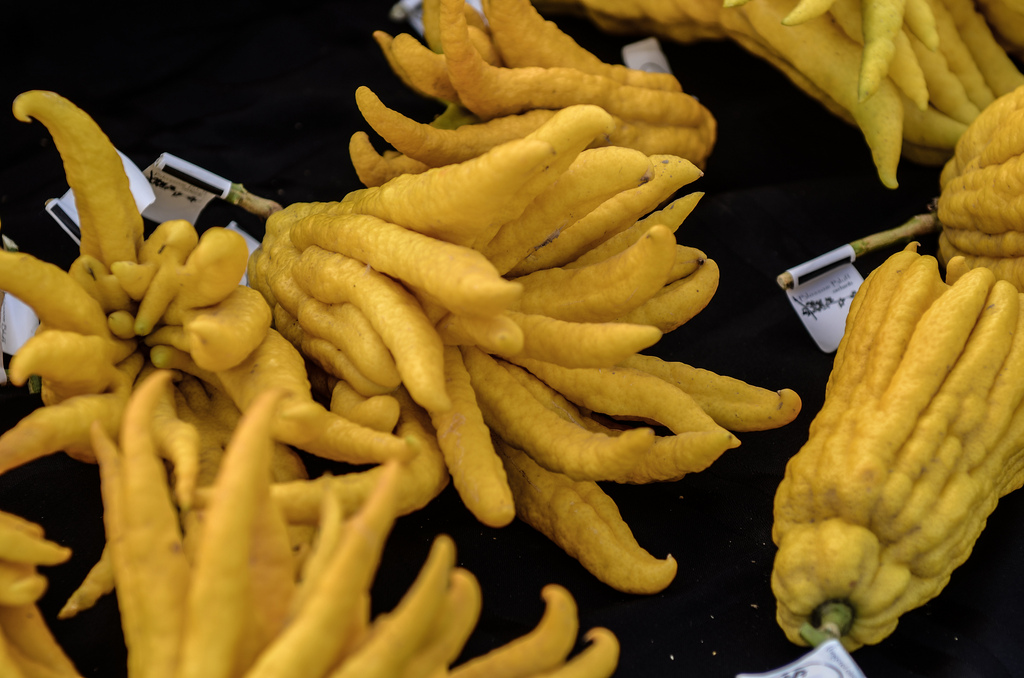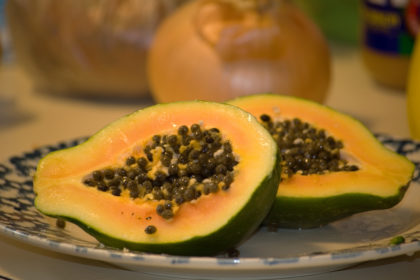Buddha’s hand, also known as fingered citron, is an unusually shaped citron variety whose fruit is segmented in finger like sections, resembling those seen on representations of Buddha. It’s called Buddha’s hand in Chinese, Japanese, Korean and Vietnamese. Take a look below for 24 more fun and fascinating facts about Buddha’s hand.
1. The different cultivars and variations of this citron variety form a gradient form “open-hand” types with outward splayed segments to “closed-hand” types, in which the fingers are kept together.
2. There are also half-fingered fruits, in which the basal side is united and the apical side fingered.
3. The origin of Buddha’s hand is commonly traced back to the Far East, probably northeastern India or China, where most domesticated citrus fruits originate.
4. Buddha’s hand fruit is very fragrant and is used predominantly in China, Malaysia and Japan for perfuming rooms and personal items such as clothing.

5. The fruit may be given as a religious offering in Buddhist temples. According to tradition, Buddha prefers the “fingers” of the fruit to be in a position where they resemble a close rather than open hand, as closed hands symbolize to Buddha the act of prayer.
6. In China, the Buddha’s hand fruit is a symbol of happiness, longevity and good fortune.
7. In China, the fruit is a traditional temple offering and a New Year’s gift.
8. The fingered citron is cultivated as an ornamental tree in gardens and containers on patios and terraces.
9. Unlike other citrus fruits, most varieties of the Buddha’s hand fruit contains no pulp or juice.
10. Though it’s esteemed for its exquisite form and aroma, the fruit can also be eaten in desserts, savory dishes and alcoholic beverages.
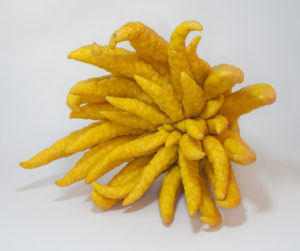
11. The sliced, dried peel of immature fruits is also prescribed as a tonic in traditional medicine.
12. Buddha’s hand is a small tree, ranging from 8 to 15 feet in height, while the dwarf variety is just 5 feet. With a USDA hardiness zone requirement of 10 to 11 to grow successfully, the fruit is not frost tolerant.
13. Following the collapse of the famous Tang Dynasty, historical records from the empire of Min, 909 to 945 AD, confirm that Buddha’s hand was in existence and considered to be an important fruit.
14. Giving a potted Buddha’s hand tree as a gift for Chinese New Year is believed to bring good fortune to the recipient.
15. Buddha’s hand is such a prized object in temples that the plants gets depicted in jade, ivory and wood carvings.
16. The Japanese Buddhist monk, Myoan Eisai, is believed to be responsible for bringing the tea plant from China to his homeland, where the art of making matcha was born.
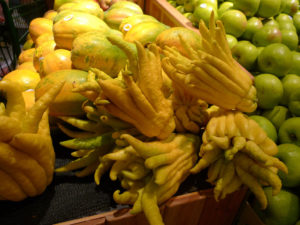
17. No one knows who brought Buddha’s hand to Japan, but it’s held in high esteem there for centuries. They call it “bushukan” and it’s popular as a New Year’s gift there as well.
18. The color of ripe Buddha’s hand range from bright yellow to orange-gold shades, while unripe fruit is usually colored green.
19. The best way to describe the flavor of Buddha’s hand is that of a lemon peel, but without any sourness or bitterness. There is a hint of sweetness, though it’s very subtle.
20. The fruit has no flesh, pulp or seeds inside. There’s no juice or moisture either, as you experience with most fruits.
21. Due to the rarity of the fruit and it’s mysterious nature, no one has published the complete nutritional information for Buddha’s hand.
22. According to traditional Chinese medicine, the fruit helps regulate Qi and does so in the liver, lungs, stomach and spleen. They also say that it helps dissolve phlegm and relieve coughing.
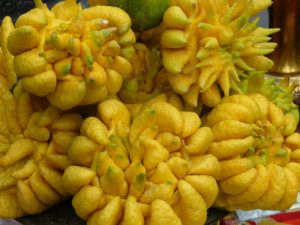
23. Scientists in Taiwan have found that when cultured cells were exposed to a water-based Buddha’s hand extract there was a higher expression in fibroblast growth factor. This promoted the growth of Schwann cells, which make the sheath surrounding neuronal axons.
24. Scientists in South Korea report that the fruit’s essential oil suppressed inflammation through several mechanisms. Some of its anti-inflammatory effects are shared with the capsaicin content in hot sauce.

